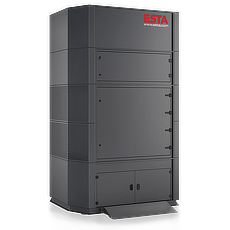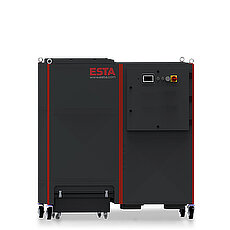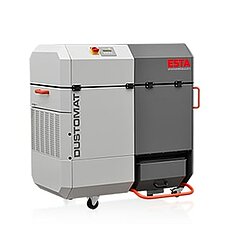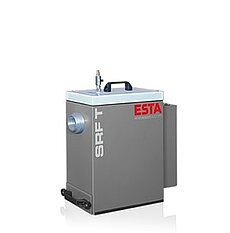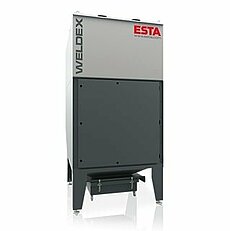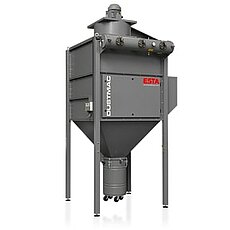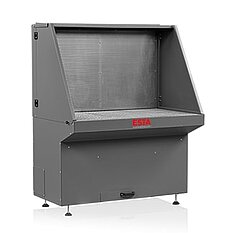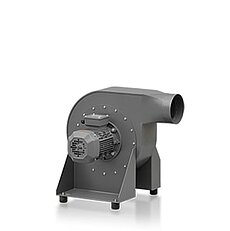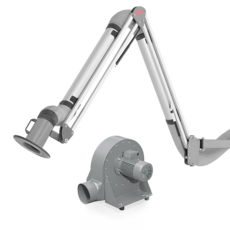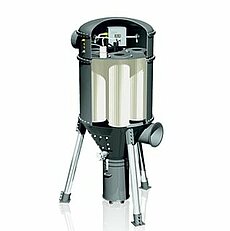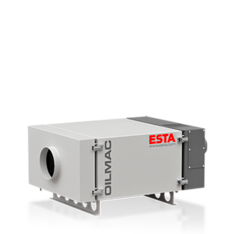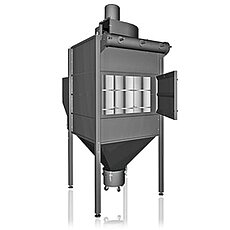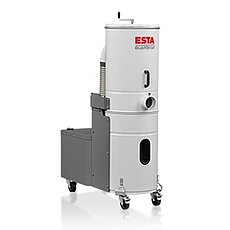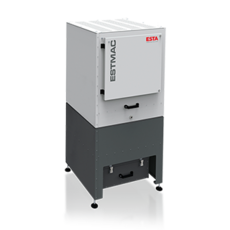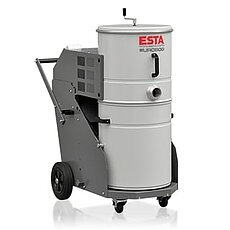Hazardous substances - interesting facts for metalworking, surface treatment and plastics processing
WHAT ARE THE HAZARDOUS SUBSTANCES?
You are not sure whether hazardous substances occur at your workplaces? Substances and mixtures with one or more "hazardous characteristics" are called hazardous substances. The hazard characteristics are for example toxic, corrosive, carcinogenic, highly flammable or dangerous for the environment.
Substances with prescribed occupational exposure limits as well as substances that endanger health due to chemical properties are also considered hazardous substances.
Hazardous substances in the welding shop include zinc oxides, which are formed during welding work with zinc sheets, and nitrogen oxides, which are formed at the edge of an oxyacetylene flame.
To keep the concentration of hazardous substances in the air as low as possible, ESTA Extraction Technology offers a wide range of different extraction systems. These effectively filter the hazardous substances from the air and ensure healthy work hygiene.

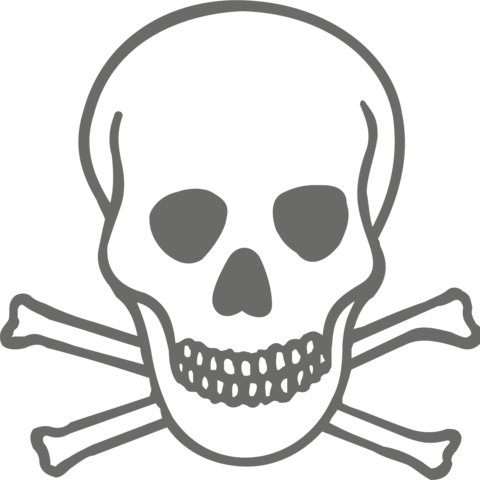


Hazardous substances from various machining processes
Hazardous substances during welding work
Welding, thermal cutting and spraying as well as soldering generates welding fumes that are hazardous to health. The welding fume particles contained therein are dangerous to humans. These can belong to dust fraction A. In this case, the welding smoke particles are alveolar. Class E welding fume particles are inhalable. 95 % of the particulate hazardous substances are generated during welding work from filler materials. These are usually metal oxides during welding work.
In addition to particles, welding fumes can contain gaseous hazardous substances. These are produced during machining processes such as gas welding and flame blasting.
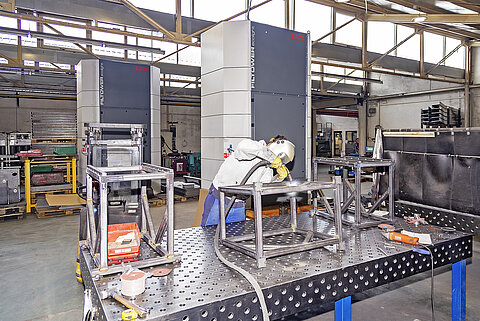
- Ozone: This hazardous substance is mainly produced when radiation-reflecting materials are welded. These include aluminium sheets and chrome-nickel steels (MIG). Ozone exposure is particularly severe in low-smoke welding (TIG). The hazardous substance is one of the carcinogenic substances mentioned in the list of hazardous substances.
- Phosgene: The hazardous substance is produced during welding work at temperatures above 300 °C. The toxic gases released during this process cause a caustic reaction on the mucous membranes and skin.
- Carbon monoxide: This hazardous substance is produced during gas-shielded welding with mixed gas due to thermal decomposition or during oxyacetylene welding.
- Nitrogenoxide: This hazardous substance is formed at the edge of a flame or arc. Inhalation of nitrogen oxide causes damage to the lungs.
ESTA offers a suitable extraction solution for extracting welding smoke particles. ESTA welding fume filters effectively extract the particles at the source and ensure a safe and healthy working environment. With ESTA, you comply with specified limit values.
Hazardous substances in metalwork machining
The risk in metal machining with cooling lubricants is a major factor. The main component of cooling lubricants are oils and those are supplemented by additives. The water-mixed cooling lubricants supplied by the manufacturer consist of 90 % water. The use of cooling lubricants become dangerous when foreign substances mix with the cooling lubricants during the metalworking process. Foreign substances include metal abrasions or hardening salts. Colonisation of the cooling lubricants with moulds or bacteria is also possible. Unprotected handling of cooling lubricants often leads to skin diseases such as contact dermatitis. Cooling lubricant vapours bear the risk of respiratory diseases. N-nitrosamines are particularly dangerous. Those must not be contained in the cooling lubricants of the suppliers. Nevertheless, there is a risk that nitrite can get into the cooling lubricant emulsions via, for example, nitrogen oxides from the air.
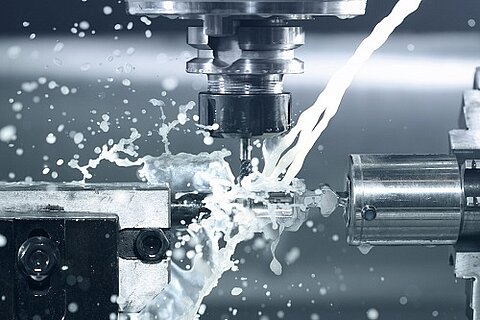
Hazardous substances for surface treatment
Paints, varnishes, adhesives and/or thinners are used in the treatment of surfaces. The solvents contained in them pose health risks to humans. Paints and varnishes partly contain organic binders, solvents and pigments as well as fillers and paint additives. Dispersion paints contain additives, which affect the skin on direct contact. The higher the volatility of the solvents in the paints or varnishes is, the stronger the solvent vapours are. There is risk of explosion when solvents evaporate. Inhalation of the solvents cause damages to the lungs, liver, kidneys and bone marrow to name a few. The occurrence of fatigue as well as irritated eyes or headaches are first signs of a narcotic effect. During processes such as the sanding of painted objects, the coating is damaged and harmful dust is generated. Those contain hazardous substances cadmium oxides or lead oxides among other things. Thinners and adhesives are also hazardous as they contain solvents just like paints and varnishes.
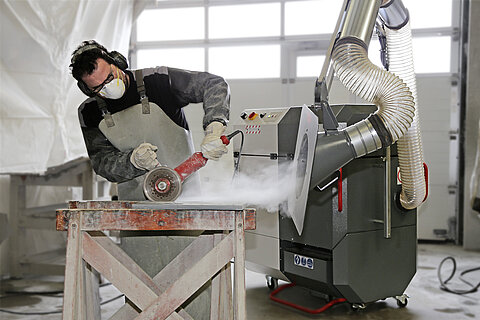
By extracting the hazardous substances at the source, you can prevent these health risks from arising. The DUSTOMAT 4 mobile dust extractor, for example, uses a connected extraction arm to effectively capture and filter the hazardous substances from the air.
Another possibility for the extraction of hazardous substances in surface treatments is the use of a ventilation system with supply and exhaust air. ESTA has the suitable extraction system solution to capture those hazardous substances for you.
Hazardous substances in plastics processing
Plastic is a popular material used by many companies. In its cured state, plastic is not a hazardous material, on the other hand mechanical processing of plastic generates dust, among other things. However, those plastic dusts along with dangerous gases or vapours, which are to be expected when processing plastic that requires high temperatures, pose a major health risk. Risks are associated with the use of polyurethane plastics for adhesives or foams, polyester resins for adhesives and the use of epoxy resins. The latter are used for glass fibre reinforced plastics, among other things. Irritation of the respiratory tract, which can lead to asthma, and skin irritation are health risks posed by the plastics.
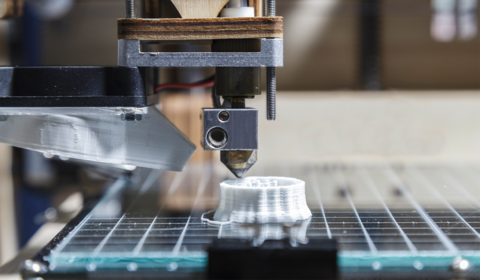
In order to minimize health risks, PU paints should, for example, only be used in rooms with an increased air exchange rate. In workshops where polyurethane plastics are used, a filter unit is recommended. ESTA's product range includes extraction units for plastics processing. Our sales team will be glad to help you determine, which extraction unit is most suitable for your application.
CONTACT
WE ARE HAPPY TO PROVIDE A PERSONAL CONSULTATION
We can adapt our exhaust installations to your needs. Tailor-made, modular and individual. Ask us!
